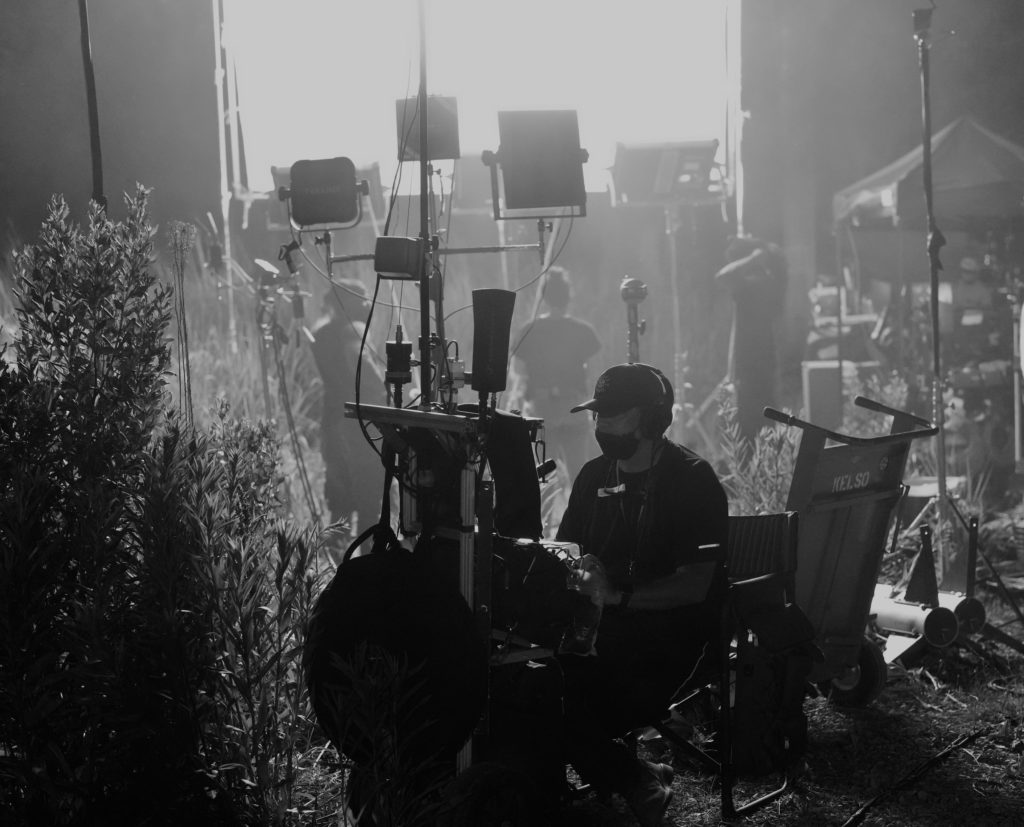
Production sound mixer Mark LeBlanc, CAS (Black Bird, Mayfair Witches) is a fan of horror, especially the tales from author Anne Rice. So when no he received a call to mix an adaptation of her iconic novel Interview with the Vampire from creator Rolin Jones (Boardwalk Empire, Weeds) for AMC, he couldn’t pass up the opportunity.
To record the bloodthirsty narrative, which stars Jacob Anderson and Sam Reid as the title characters and Eric Bogosian as the inquisitive investigative journalist, LeBlanc relied on Zaxcom technology to navigate the hurdles of production, including the Nomad 12 mixer/recorder, QRX200 receivers, ZMT4 wireless transmitters for talent and TRX743 wireless transmitters for booms.
“Being a period series, I knew it would be an intense challenge,” LeBlanc says. “Our most difficult job was keeping modern day sounds from invading the dialog track of a show set during the 1910s.”
The show was filmed on a number of historical locations throughout New Orleans, including the French Quarter, Jackson Square, Pirates Alley, the Gallier House, and on The Ranch soundstages in the city of Chalmette, Louisiana, which housed the built sets of Storyville and the famous Gallier House.
Along for the haunt were boom operators James Colin Beyer, Tanya Peel, Donovan Thibodeaux, Kirby Leonard and Josh Wood as wells as sound utility Jamey Osborne. Below, LeBlanc shares how he approached recording the production sound of the series and his fondness of ZaxNet.
What were you most concerned with during prep?
Our largest concern was modern city sounds polluting the dialog tracks. Exteriors were mainly in and around the French Quarter, but luckily, cooler temperatures kept larger crowds at bay until the weather warmed up. Then there was also nudity to contend with. That required solid communication between the director, assistant director and director of photography to reinforce the idea that cameras shooting wide and tight at the same time would not allow us to capture usable dialog.
The period clothing is magnificent in detail. Did you to connect with the costume department to diffuse potential issues?
Yes, I visited with them about a month prior to shooting. We did not have final costumes as they were awaiting approval and fittings, but I knew they would be thick wool for most of the men’s outfits. From the scripts, I knew sewing in the lavaliers was not practical due to scenes that required fake blood being deployed, during which we remove the bodypacks for safety. There were also times where actors wore special rigs that would have radically adjusted the mic placement. My sound utility Jamey worked closely with the costumes during production to insure both departments were happy.
What were your go-to transmitter and microphone bodypack pairings?
We used the Zaxcom ZMT4 wireless transmitters for all talent. The Tram TR50 was our primary mic for male cast. I started the show with a different lavalier but was not happy with what we were capturing. The thick wool combined with a few costume restrictions meant we could not expose the mic like we wanted. The switch to Trams not only addressed our costume issues, it additionally gave me a full, rich tone I was missing the first few days. A good example of the Trams was the long walk and talk with Louie and Lestat on Rue Royal in the pilot episode. A Sanken COS-11 was used for mostly tie rigs.
The DPA 4060 and 6060 were our lavalier choice for our female cast. I find the DPA’s have a very natural sound on women’s voices with excellent dynamic range. We also had fewer restrictions when dealing with costumes and could take advantage of the 6060 smaller size to get the mic more exposed.
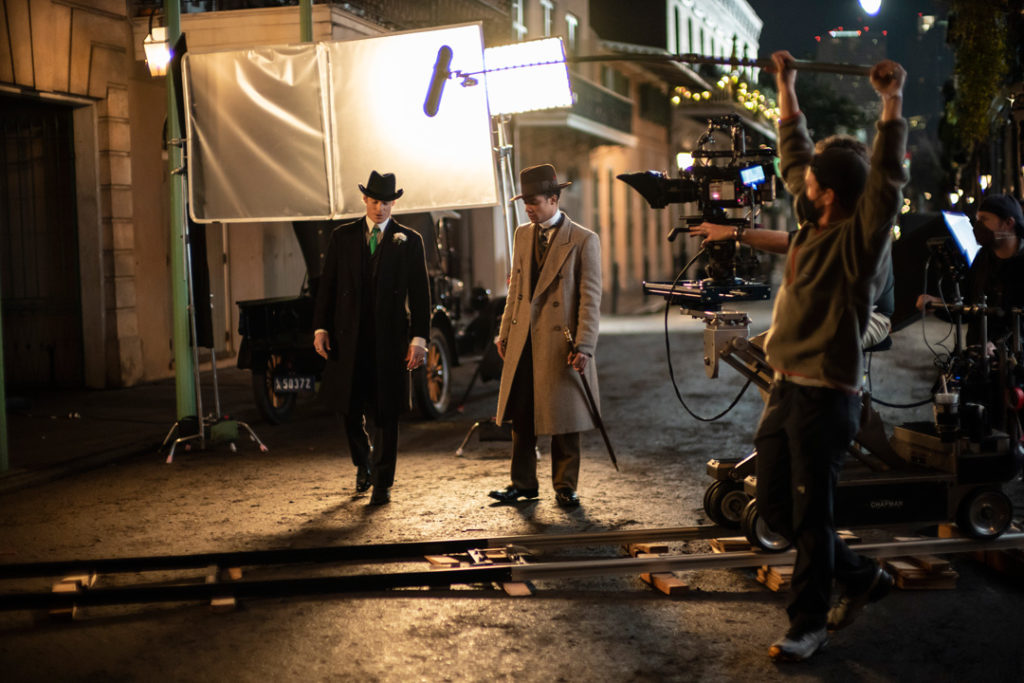
Since we’re on the topic of micriphones, what did the boom operators use for overheads?
We used the Sennheiser MKH 416 and MKH 70 paired with the Zaxcom TRX743. The MKH 416 covered 90 percent of our exterior scenes. I like the rich sound the 416 gives me when matched with the TRX743. The 416 is just rock solid in all weather and RF environments. The MKH 70 was used when we needed better isolation from environmental noise. Two locations in particular were the Masonic graveyard located near Interstate 10 or Royal Street with the many ghost tours crossing at all hours of the night. Both Sennheisers sonically match the Tram lavaliers well and made it easier for me to blend between lav and boom.
Do you have a preferred cart setup?
I have three different rigs depending on the situation, but my main cart, which I use on location, has the Nomad 12 with the Aria Control Surface running Nomad Touch. Then the finishing touches are the QRX200 receivers sending AES digital audio into the Nomad, a L-Com 2.4 GHz antenna for ZaxNet control with a Sunhans 2.4GHz amp for added range, a Comtek BST-75 for general monitoring and added the Zaxcom ERX2 to send video playback an audio feed. Antennas were the RF Venue Diversity Fin, AKG Helical and PSC Sharkfins. I use the Accsoon CinEye 2 transmitter for wireless video sending to my Samsung tablet which also rolls my PDF sides. Powering everything is the PSC Power Distribution System. I love this setup! I find the freedom of movement this cart allows outweighs any of the creature comforts a large cart might provide all while not giving up any quality.
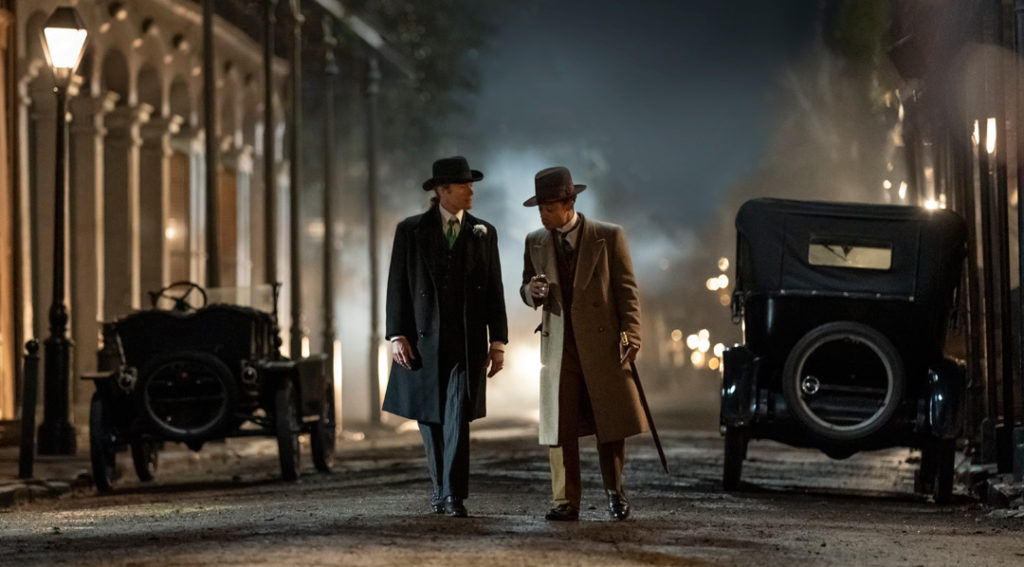
There are also a number of period cars rumbling along the locations. How did sound approach mitigating their effects on the dialog?
Our locations and AD staff did an amazing job with ITC, casting a wide enough net to drop the levels of background cars down to a manageable level. Also, I must tip my hat to the Picture Car crew. They knew how loud the antique cars would be and helped by replacing the motor in our hero car that Jacob Anderson’s character Louis can be seen driving with a more modern motor and exhaust system which brought the noise down considerably. That, along with tactically arranging the loudest cars to clear frame first, gave us the time to see the car, but turn the motor off before the dialog happened. That cooperation only occurred because of our due-diligence in pre-production.
To record the scenes, none of our hero cars had tops to them, so we had to rely on lavaliers for those scenes. We also had a few carriage scenes that we were able plant a few lavaliers. For normal car rigs, we would use the Shure WL185 and place it just off the frame line.
Is there anything unique to the show that Zaxcom gear helped in its recording?
Dynamics. Victims screaming, characters whispering then yelling… the show had it in spades. Zaxcom allows my tracks to be more consistent when looking at gain levels. ZaxNet has a lot to do with that. Before, I would decide on a level that I hoped would work for the entire scene, now I am no longer forced into making that choice.
By far, one of the cooler functions is being able to assign ZaxNet gain control to a knob on my Zaxcom FP8. I can start a scene with the gain set to my normal range, which for me is around 21/22, using a Tram microphone on one of the male characters. Then before an outburst, I can remotely gain down the transmitter to a setting that would never clip. I no longer have to give up signal to noise for a whisper or blow out the input stage due to a yell.
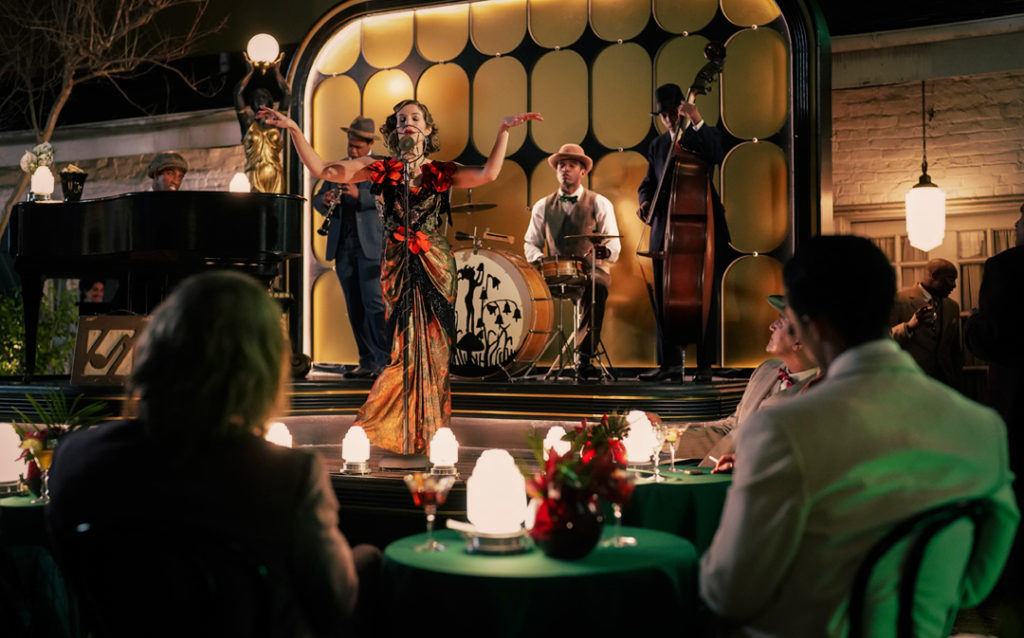
The series has a lot of those low to high dynamic dialog moments.
Yes! There’s a scene in a later episode that even the boom’s gain was set to 1 due to the extremely high volume a character is able to project. For those scenes, we use my AKG CK61 which is capable of handling extremely high SPL levels. Paired with the Zaxcom TRX743, I had no fear that any one part of a scene had to be sacrificed to due to gain setting constraints. Many of the loudest scenes take place inside. My AKG 480b preamp and CK69, 63 and 61 series microphones have 140db plus of headroom. The CK69 was my most used mic on the show. Just love the sound.
Since you mentioned ZaxNet, what do you like about it?
Being able to remotely change parameters on the transmitter, sometimes mid-take without bothering the talent is huge. The RF environment in the French Quarter is nebulous, scans can be radically different from minute to minute. I can make critical changes without engaging with the talent, allowing them to stay in the moment. It really did change how I work from top to bottom.
My sound utility Jamey loves it. We no longer have to rush to get RF Scans done prior to handing off transmitters to costumes. Any adjustments can be made once they get within range of my carts. Also, about a month into the show, I added a Zaxcom ERX2 IFB receiver, allowing our video playback team to stream a feed back to AMC home offices. My prior system just could not handle the extreme dynamics the show presented. The feed is now as good as a hardline and the ERX2 IFB has now become an essential tool in my kit.
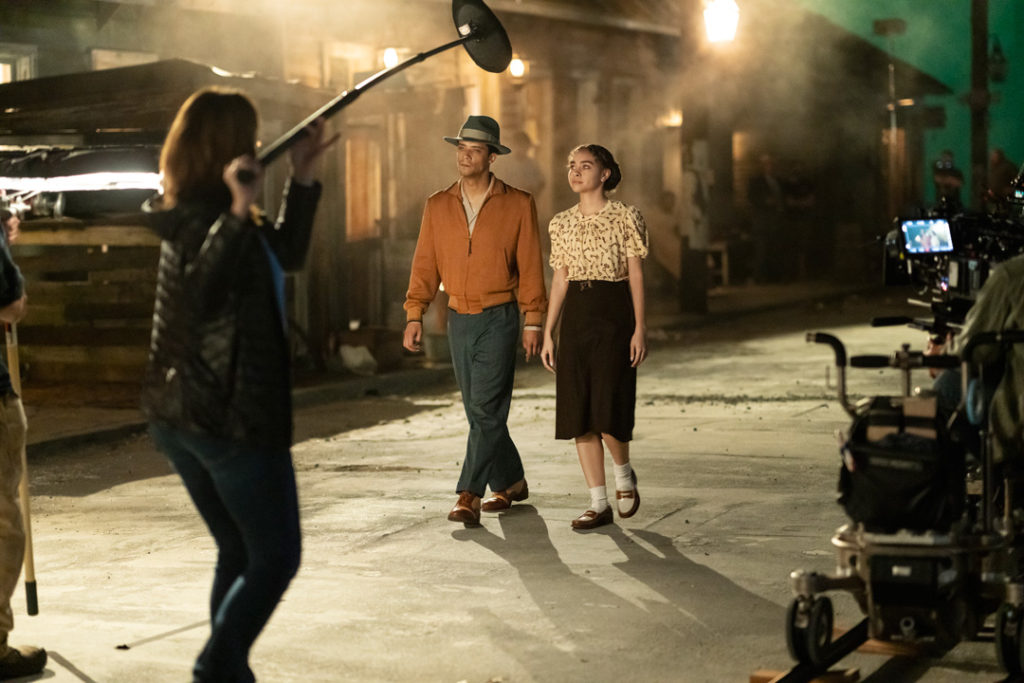
One of the more climatic moments in the pilot episode (In Throes of Increasing Wonder…) is the church scene with Lestat (Sam Reid) and Louis (Jacob Anderson). Can you share how you approached the sequence?
Story wise, it’s the defining moment where Lestat uses all his powers of persuasion to convince Louis to submit and be turned into a vampire. The acoustics in the church were being polluted by propane burners used to simulate the pews on fire. They generate a very distinct brown noise. Lestat’s performance also started in this very loud tone then collapsed to a very longing, quiet tone.
We used the AKG CK69-ULS mic for the scene. The AKG can add an additional interference tube which increases the directionality of the mic at the sacrifice of off-axis forgiveness. Kirby Leonard was boom op for that sequence and worked hard in getting the mic in just the right sweet spot to capture the performance. The off-axis rejection allowed a good amount of separation between the voice and noise to allow any post-production processing to cleanup issues. I’m very happy how the final scene turned out.
What did your team take away from recording Interview with the Vampire?
Period pieces are stressful for sound. The soundscape on Interview with the Vampire was completely different from the modern city sound of New Orleans. Approaching production about how they could help abate as many issues as we could, which encourage me to up my diplomat skills.
For example, on scenes with no dialog that were of a montage nature, we would allow both foot traffic and car traffic to run during a scene. This gave our ADs a little break. In turn, this goodwill would be repaid when we would ask if we could do anything to bring down the volume of a jazz trio next to Jackson Square. This give and take only served to increase the chances of getting usable sound.
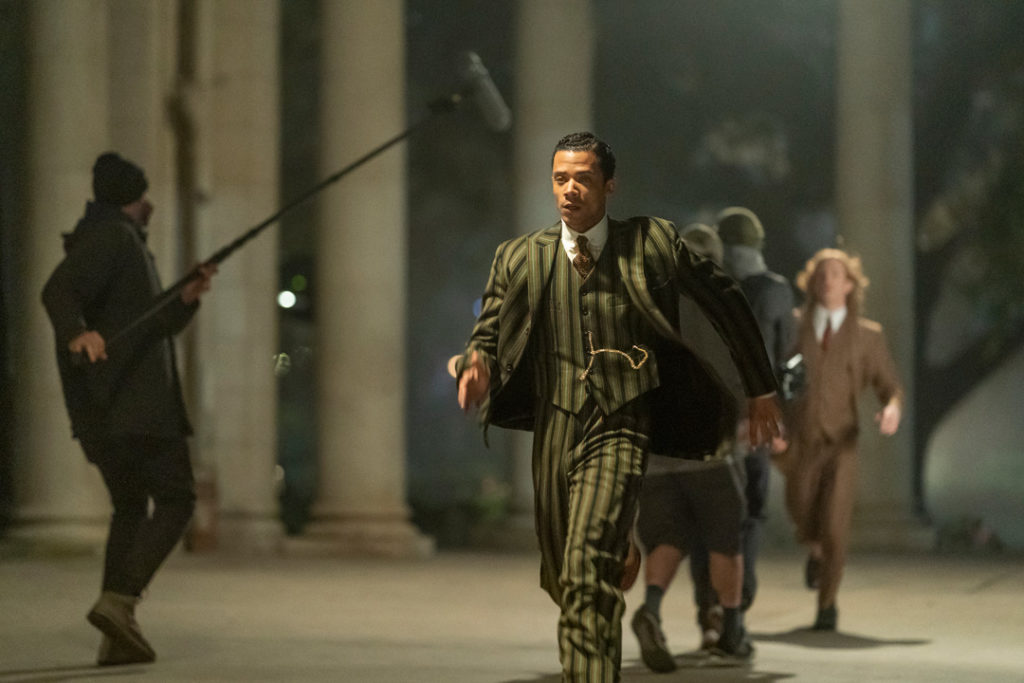
Anything you’d want to see improved with your Zaxcom gear?
I haven’t hit a limiting factor that really made me want to look for other solutions, which is very comforting. I’m hoping to check out the Nova 2 and whatever incarnation the next Deva takes. Like every mixer out there, little features here and there would make things easier and of those I really have two. It would be helpful if the receivers could display the current recording segment each corresponding transmitter is currently set to. This would help in file management as sometimes we get too busy to take a look at how many segments are currently used as there’s a 500 file limit. I sometimes go over the limit. The other is sending a recording beep to the outputs, not just headphones. The beep would cut through the clutter.
Care to share any advice for up-and-coming production sound mixers?
Always be open to experimenting with mic choices, mic placement or projects that take you out of your comfort zone. Work on one of those 48 Hour Film Festivals or a student film. These should be seen as opportunities to expand your toolkit of options. Don’t be afraid to approach a director or AD to ask for another take, but be prepared to deliver a fast and precise reason and learn to accept that your request might be turned down.
Anne Rice’s Interview with the Vampire is available to watch on AMC and AMC+.